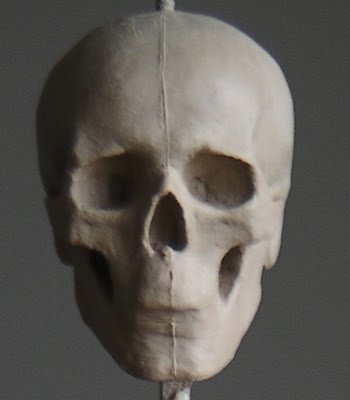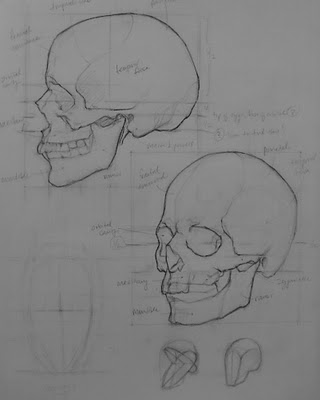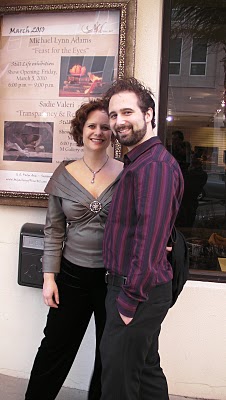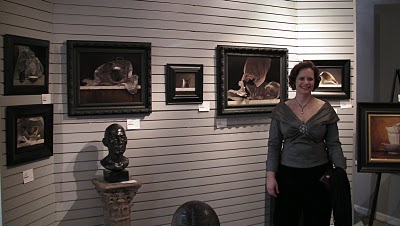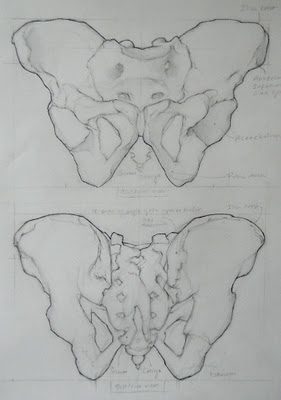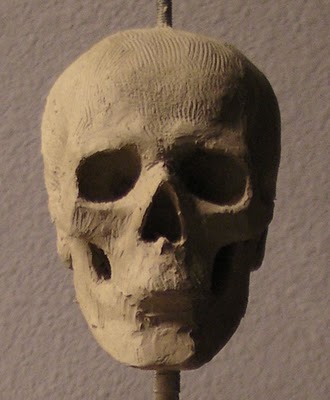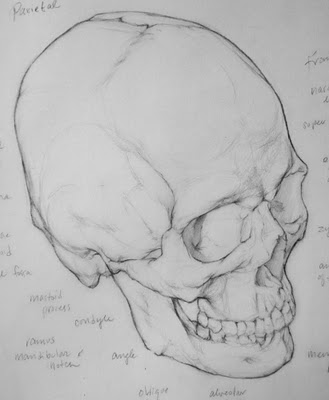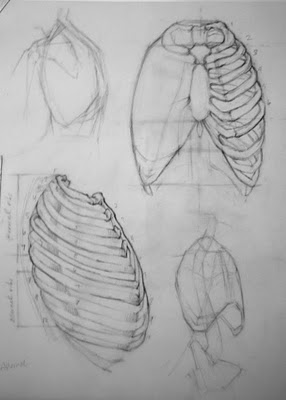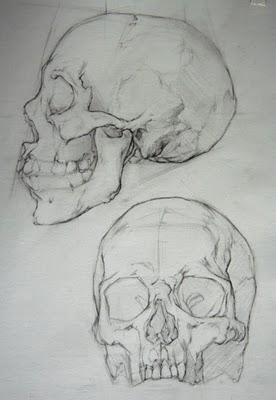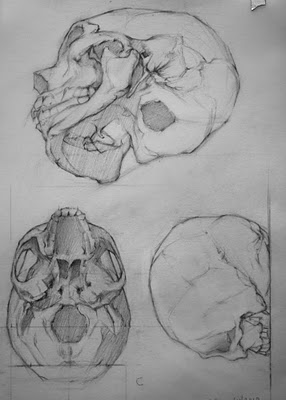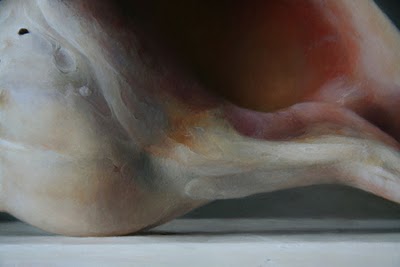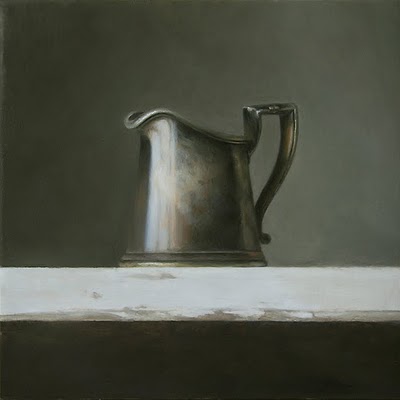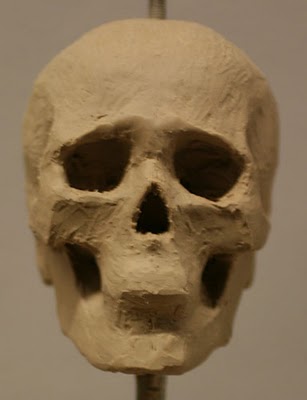 Today I worked on my ecorche skull for about 4 more hours and did not get close to finished.... I never knew I could spend so much time on 3 inches of clay! I think I over-emphasized the "worried" look.
Today I worked on my ecorche skull for about 4 more hours and did not get close to finished.... I never knew I could spend so much time on 3 inches of clay! I think I over-emphasized the "worried" look.
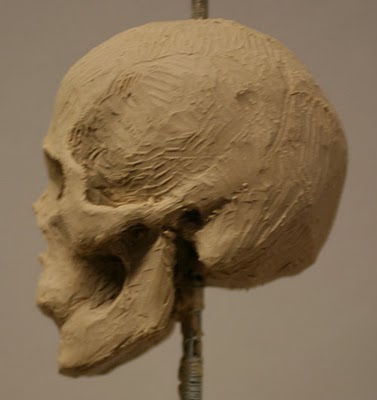
As difficult as it is getting all the proportions and forms correct... then it has to be symmetrical.
Andy has shown us key landmarks for keeping the whole thing in proportion, but while I whittle away at the details with tiny dental tools I back up and realize the main proportions have been distorted - then it's back to hacking away with the bigger tools.
Anyway, it was a lot of fun, and I started to get a feel for how the clay works and what the different tools do. I began to get a real appreciation for plastelene (non-hardening) clay. It's amazingly structural, takes deep carving easily but also holds up when you want to just take a tiny shaving off.
Neat-o stuff!
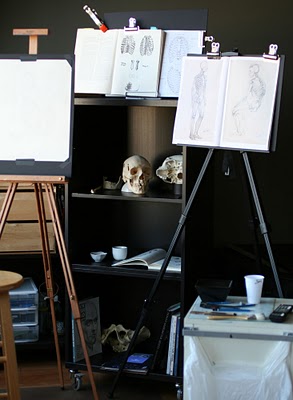
Above is my current setup in my studio for the anatomy drawing homework. I open every anatomy book I have and pick the best images and prop open the pages for easy reference while I am working.
This week I'm drawing the ribcage. I didn't realize how difficult it would be, it's not the sheer number of ribs that's the hard part, it's getting the correct angles, width and spacing.
I have more appreciation every day for the efficiency and complexity of organic engineering: Twelve ribs and not one is parallel to another, yet together they form the most perfect, graceful cage.
If you bend your fingers slightly, with a bit of space between them, into a soft, almost-fist, you'll see at no point are any of them parallel... the ribs are the same way, every facet converging or splayed, but all together they look evenly spaced.
It's a feat of engineering!
 Saturday, March 20, 2010 at 1:38AM
Saturday, March 20, 2010 at 1:38AM 



